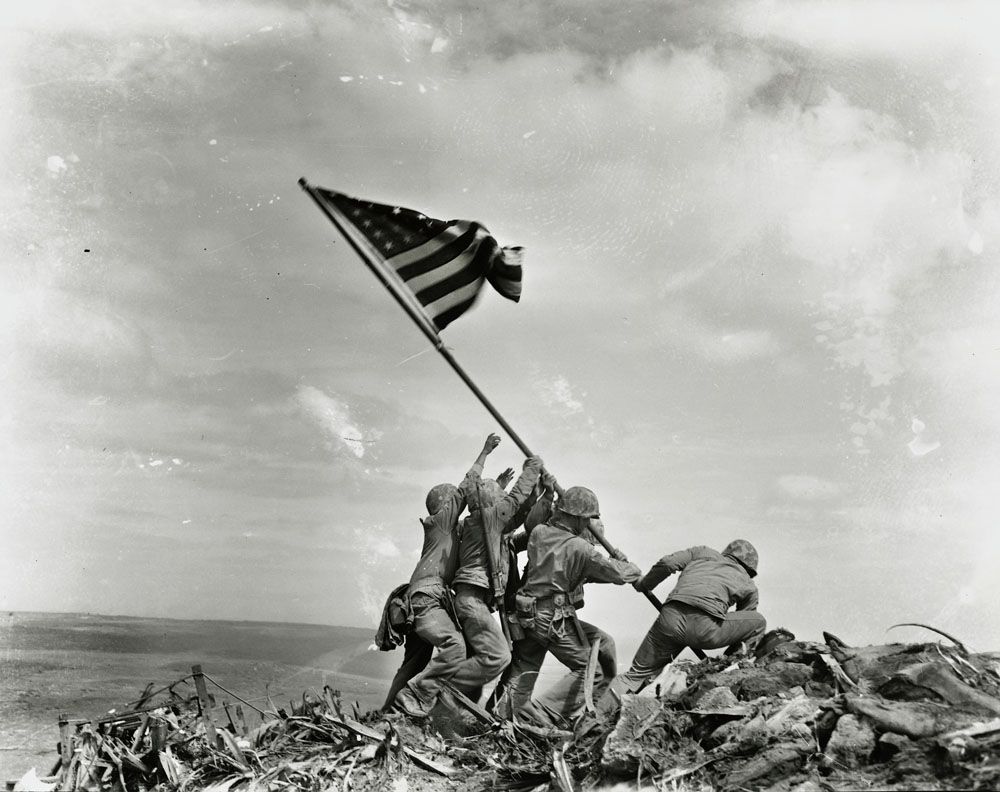|
“Resolved: that the flag of the United States be made of thirteen stripes, alternate red and white; that the union by thirteen stars, white in a blue field, representing a new Constellation.”
- Journal of the Continental Congress, June 14, 1777 Every morning in my grade school we pledged allegiance to the flag, mumbled the Lord’s Prayer, and sang a patriotic song. Flag equaled country, sacrosanct, deserving of reverence. It wasn’t always that way. The young republic in 1777 needed an identifying banner to raise on ships or carry into battle. More practical than emotive, the new flags didn’t fly in classrooms or outside private homes. Their mythic overtones came later, in response to current events. Union loyalists flew the Stars and Stripes during the Civil War. Soon after, approaching the centennial, descendants claimed Betsy Ross sewed the first American flag. In the late 1800s, U.S. flags promoted the assimilation of immigrants. A Wisconsin schoolteacher is among many credited with starting Flag Day. A marketer created the Pledge of Allegiance to boost flag sales to schools. Two world wars and the rise of godless Communism heightened the distinctively American “cult of the flag.” Presidents and Congress formalized Flag Day (1916, 1949), made “The Star-Spangled Banner” the national anthem (1931), adopted the Pledge of Allegiance (1942), and added “under God” to the pledge (1954). Flags marked political discord in the 1960s, unity after 9/11, and polarization last January—surely not what the founders had in mind.
6 Comments
Dennis Doren
6/14/2021 07:13:56 am
Speaking of the changing messages implied by flying a flag, I saw something the other day that confused me. At one house both the US flag and the Confederate flag were (and are) both flying prominently. Given one was originally meant in direct contrast to the other, to the degree that scores of tens of thousands of people died fighting for their side, I truly do not know what message I was to understand.
Reply
6/14/2021 04:17:56 pm
Confusing indeed! And rioters carrying Confederate flags to the Capitol Jan. 6 called themselves patriots acting to save the United States. Perhaps the more powerful a symbol, the less logic or consistency in its use. I read a piece this morning arguing that leaders of the Confederacy were no more traitors than Washington et al were in rebelling against Britain, the only difference being that they lost. If the Continental Army had lost the American Revolution, I can't think we would still be flying the Stars and Stripes.
Reply
Anne Liesendahl
6/15/2021 10:28:24 am
At one time I planned to write a children's book about the flag. Here's an early draft.
Reply
6/16/2021 06:41:06 am
Anne, this is lovely! I wasn't aware of Wisconsinite Bernard Cigrand until I started exploring the history of Flag Day this month. Various local communities had created their own Flag Day celebrations, many of them on June 14, but few had his drive and persistence to make it a national holiday.
Reply
6/22/2021 07:08:10 am
Rebecca, I'm with you. Whether the Red, White, and Blue represents unity or red-vs-blue division is so much a matter of context. Either way, it can be a powerfully emotional symbol, as we saw in January both on the 6th and during the inauguration two weeks later.
Reply
Leave a Reply. |
AuthorI'm a historian who writes novels and literary nonfiction. My home base is Madison, Wisconsin. Archives
July 2024
|

 RSS Feed
RSS Feed